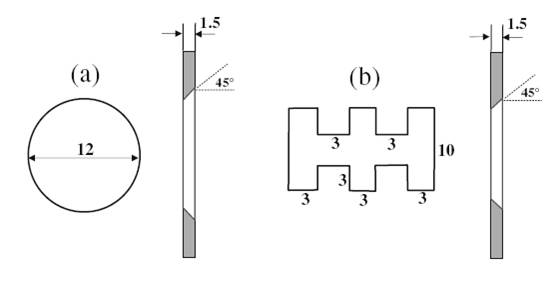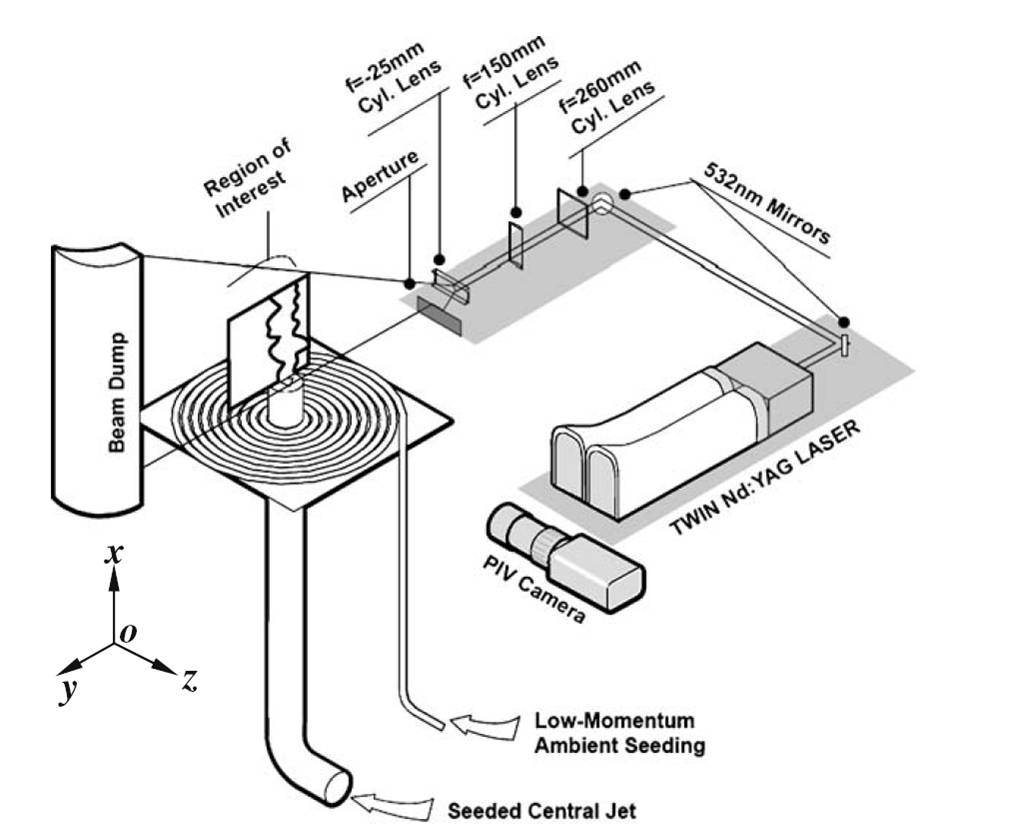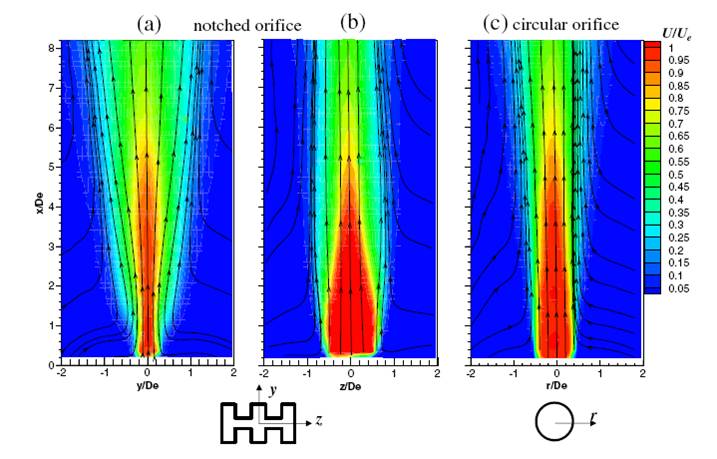On Turbulent Jets Issuing from Notched-Rectangular and Circular Orifice Plates
Flow Turbulence Combust
DOI 10.1007/s10494-009-9239-6
On Turbulent Jets Issuing from Notched-Rectangular and Circular Orifice Plates
Jianchun Mi · P. Kalt · G. J. Nathan
This paper reports an experimental investigation of the near-field flow characteristics of two air/air turbulent jets issuing respectively from notchedrectangular and circular orifice plates with identical opening areas or equivalent diameters (De). Planar particle image velocimetry (PIV) was used to measure the velocity field at the same Reynolds number, based on De, of Re = 72,000. Consistent with previous work on other noncircular jets, the present study finds that the notched jet has a higher rate of mixing than does the circular counterpart. In particular, this jet in the very near field transfers its momentum to the surroundings at a greater rate, evidenced by a notably shorter unmixed core and faster turbulence intensity growth. The higher rates of overall decay and spread of the notched jet are maintained over the entire measurement region and likely beyond. In addition, the phenomenon of axis switching is also found to occur in this jet.

Fig.1 Present orifice shapes and dimensions (inmillimeters). a Circle:De = Dh = 12 mm, De/Dh = 1 and AR = 1; b
notched-rectangle:De = 12 mm, Dh = 9.12 mm, De/Dh = 1.32 and AR = 1.5

Fig. 2 Experimental arrangements of the PIV system and the coordinate system

Fig.3 Mean velocity contours and streamlines of a notched jet in the xy plane; b notched jet in the xz plane; c circular jet. White dashed lines mark the location where the two half-widths are equal.

Fig.4 Contours of the normalized turbulence kinetic energy. Notched jet: a the minor axis plane; b the major axis plane. Circular jet: c the central plane
For details: http://www.springerlink.com/content/a3w8w53k48wt7624/
